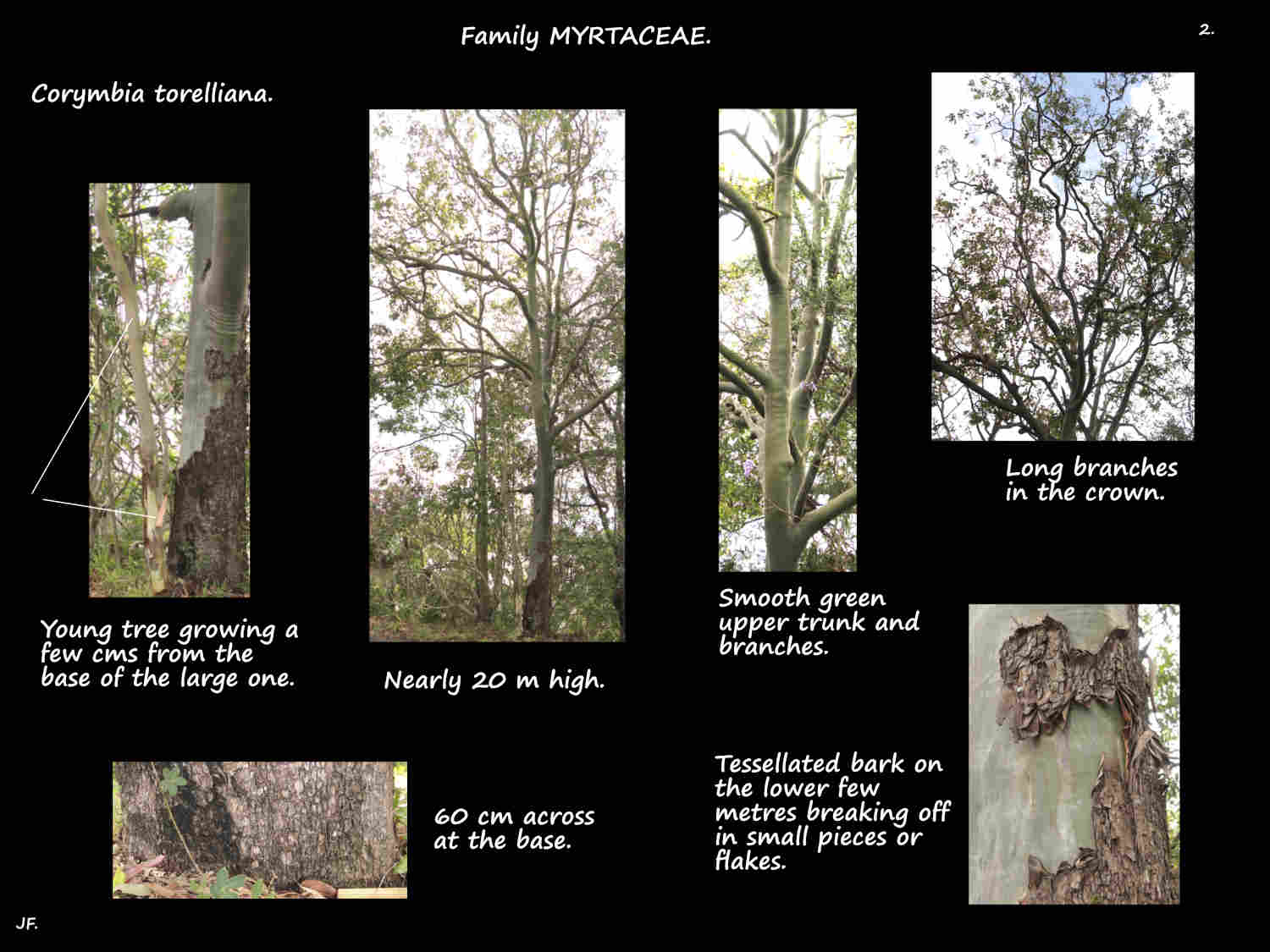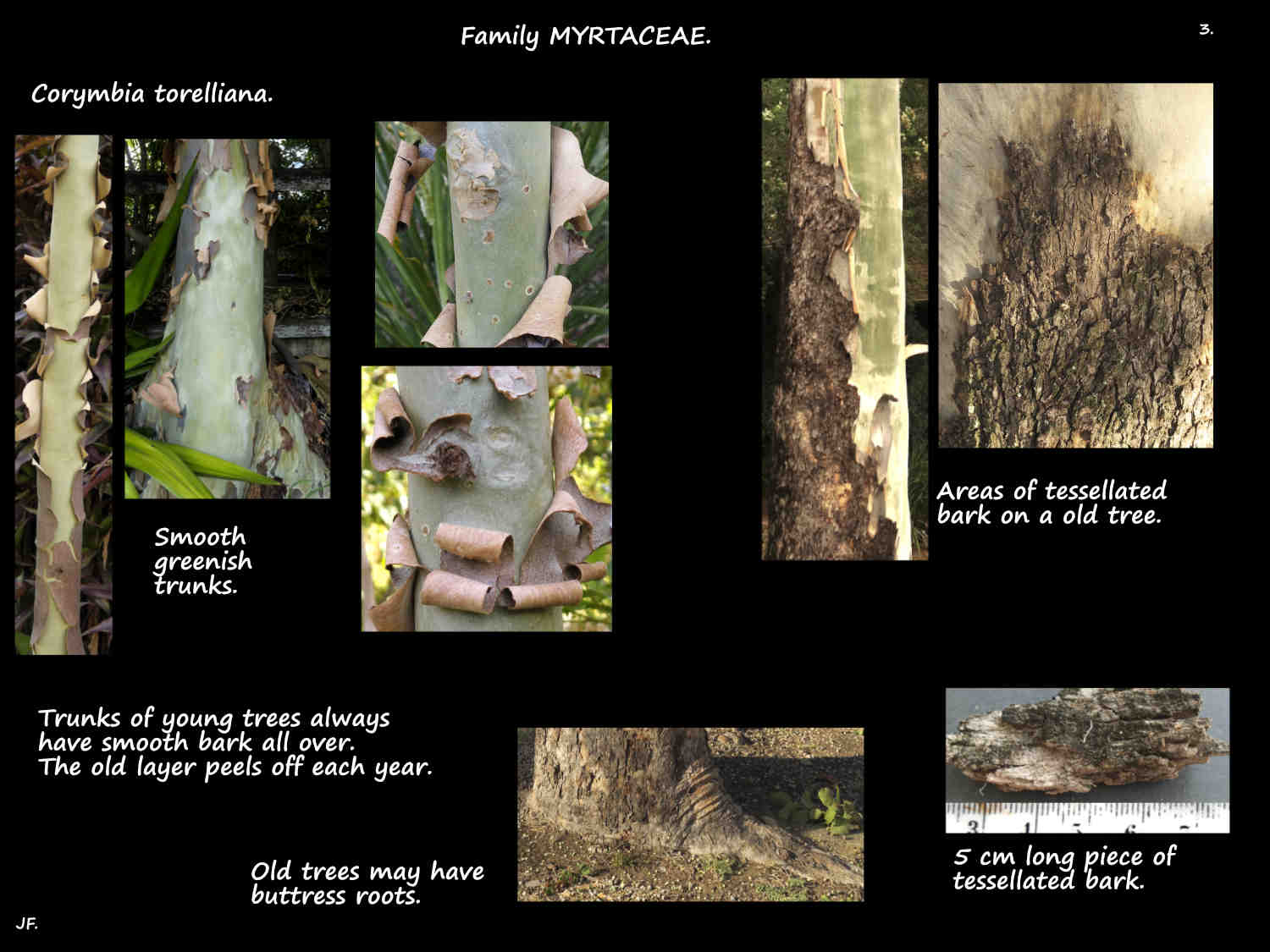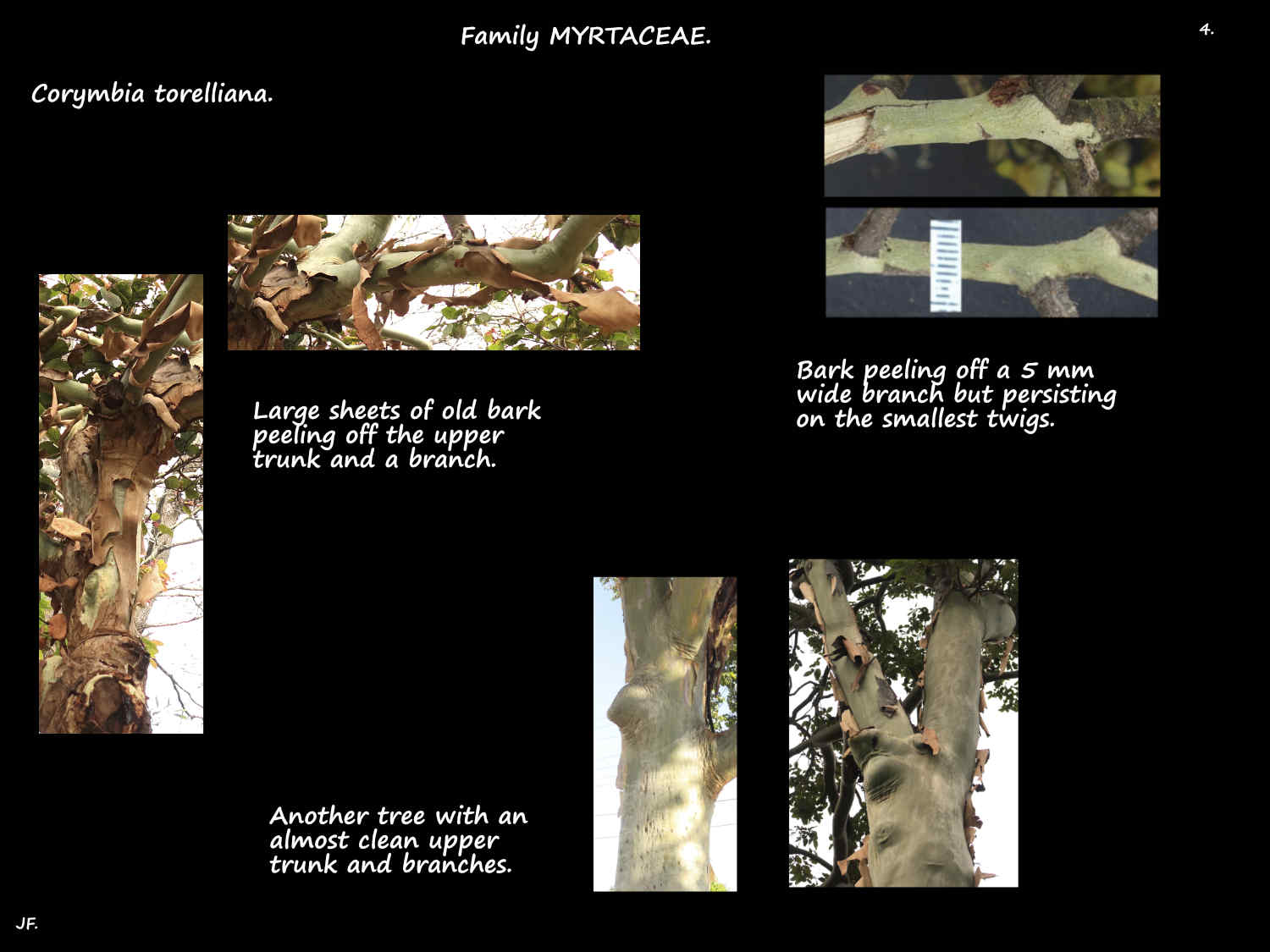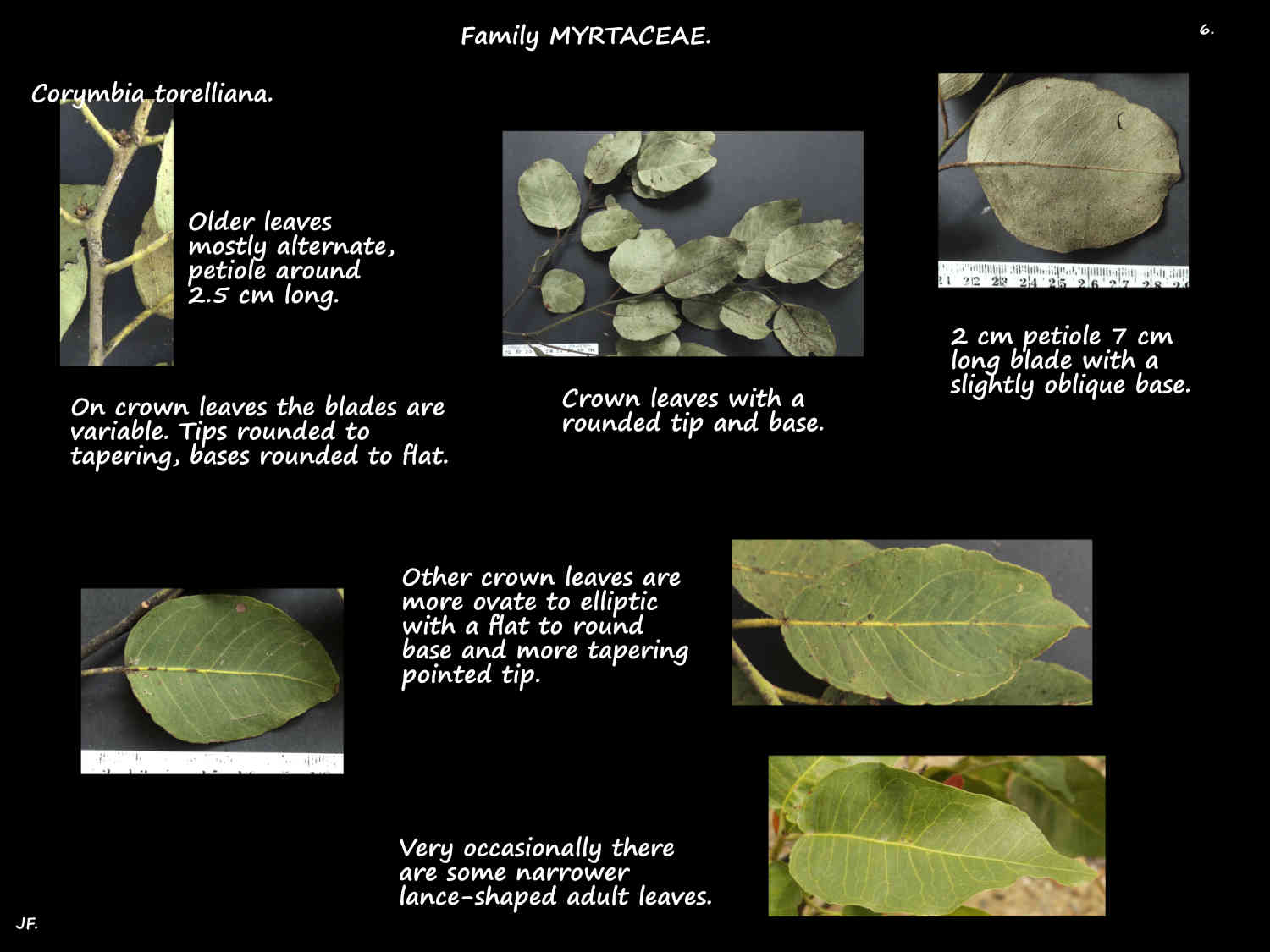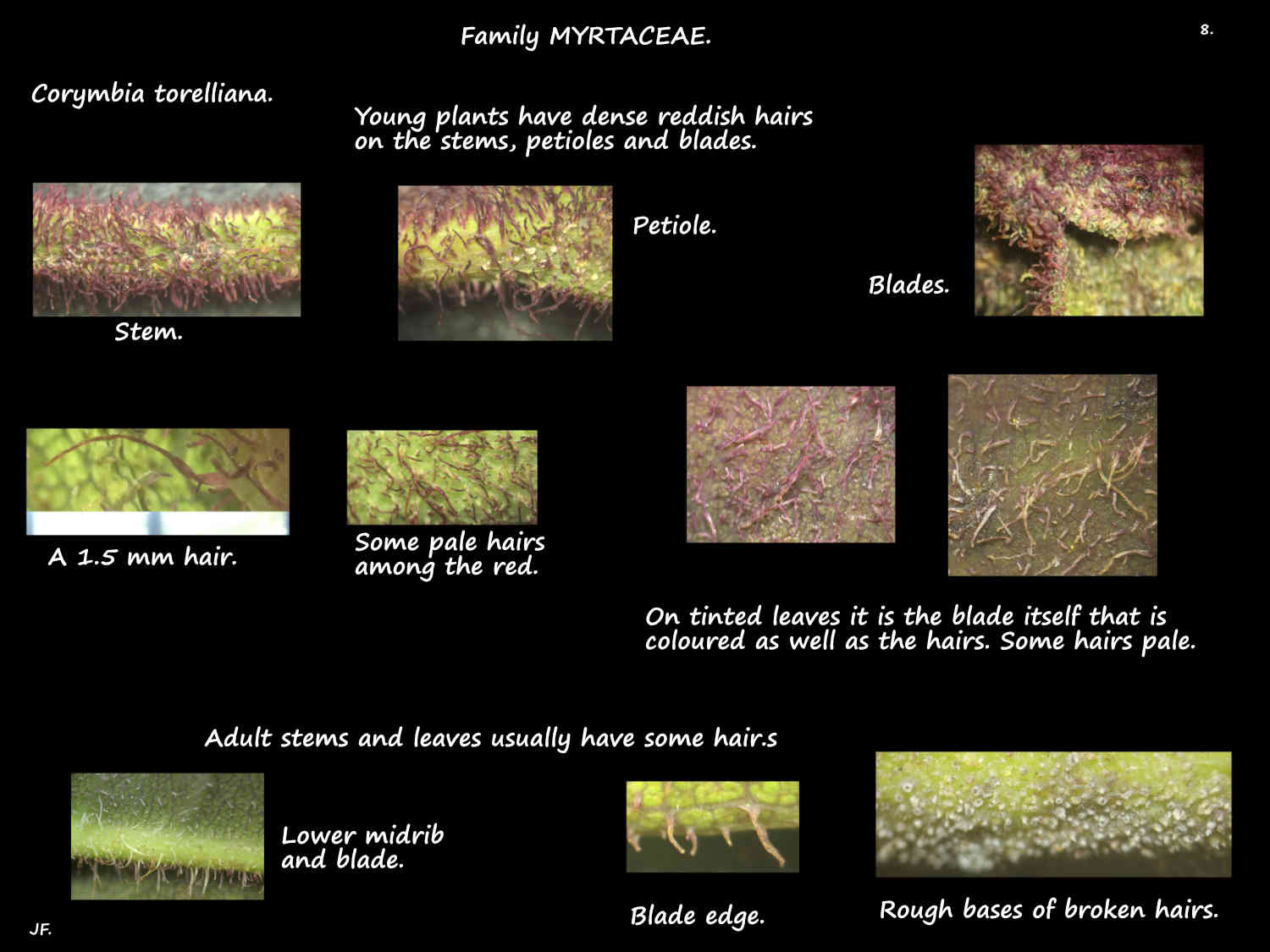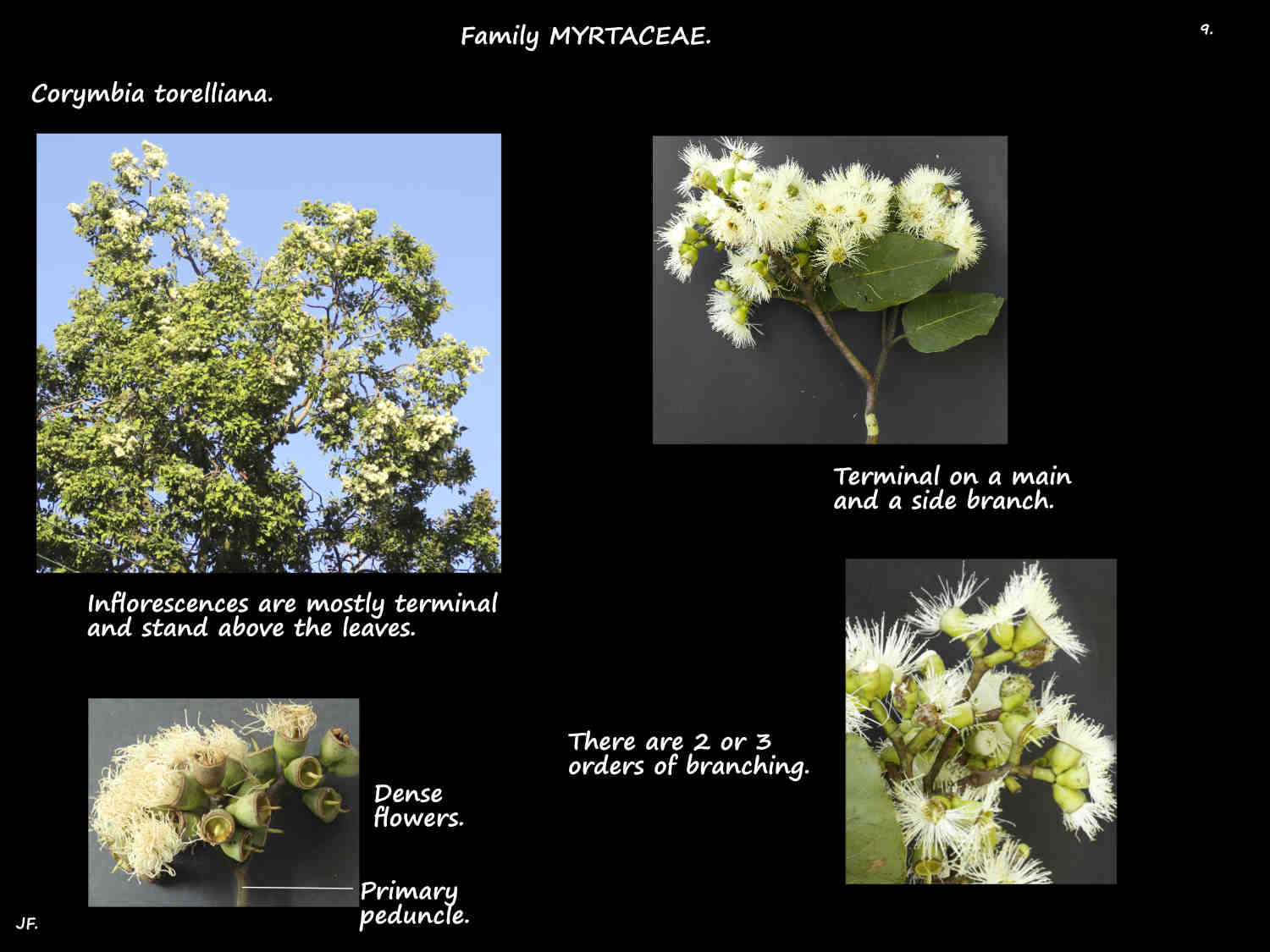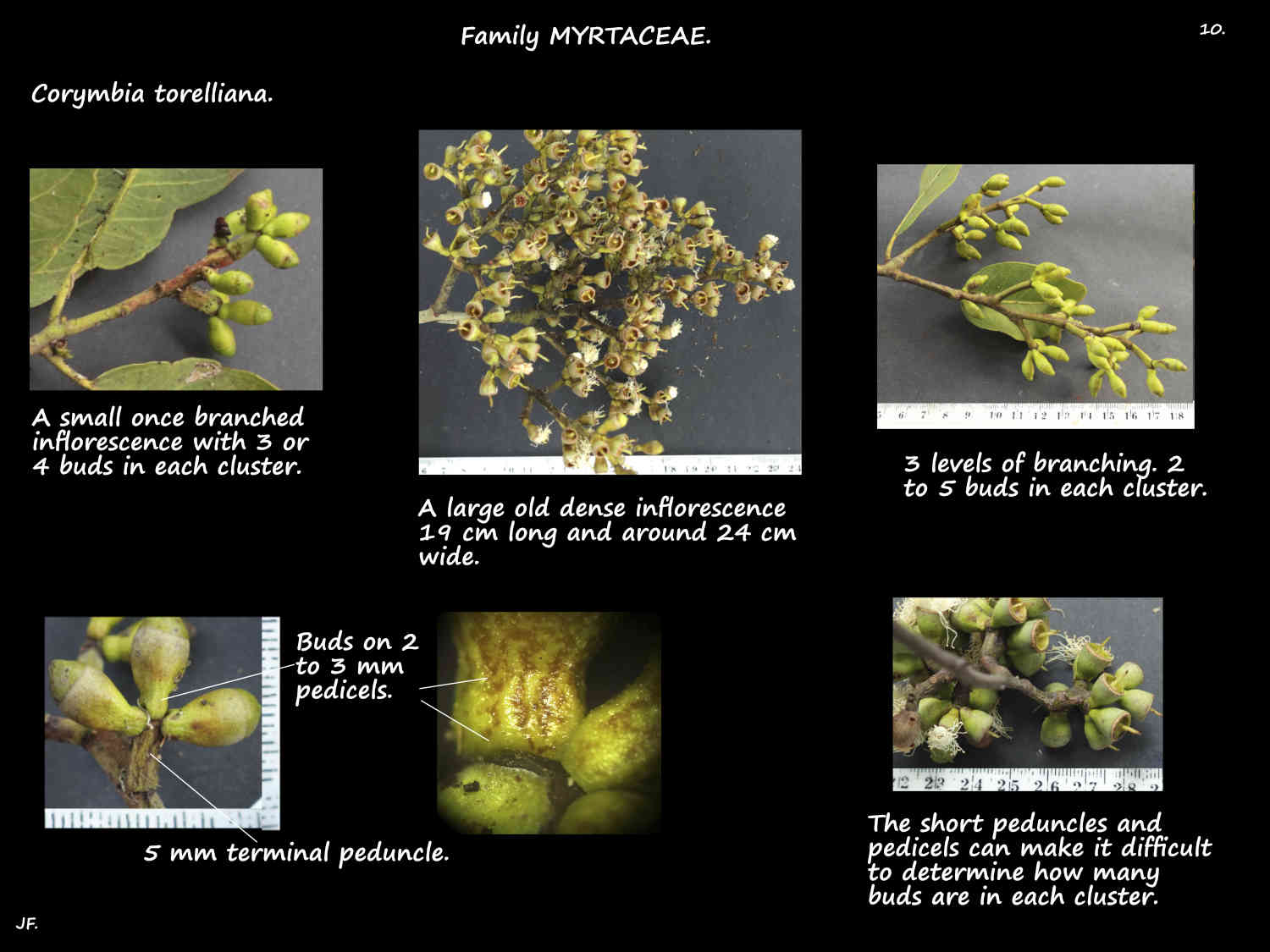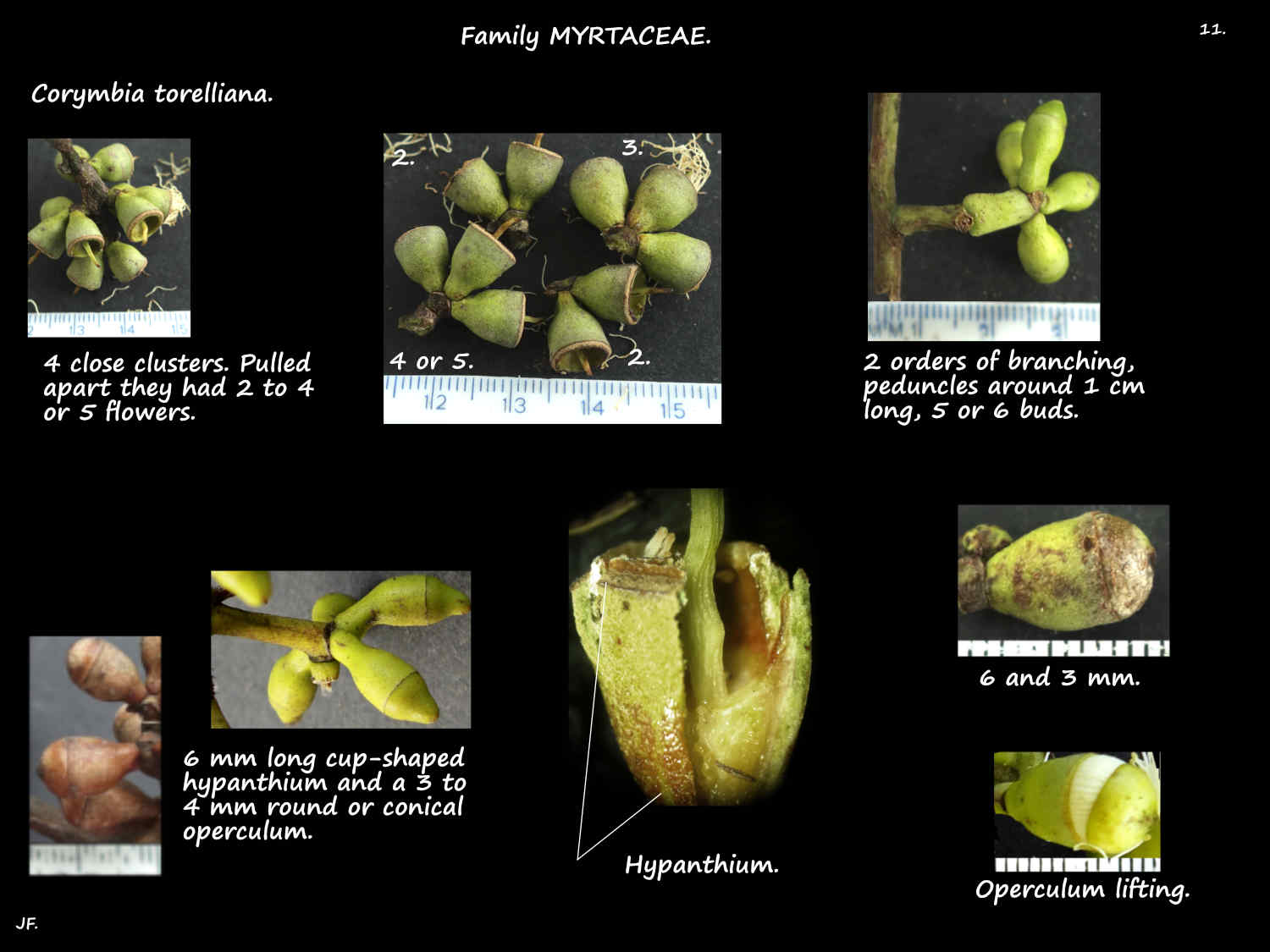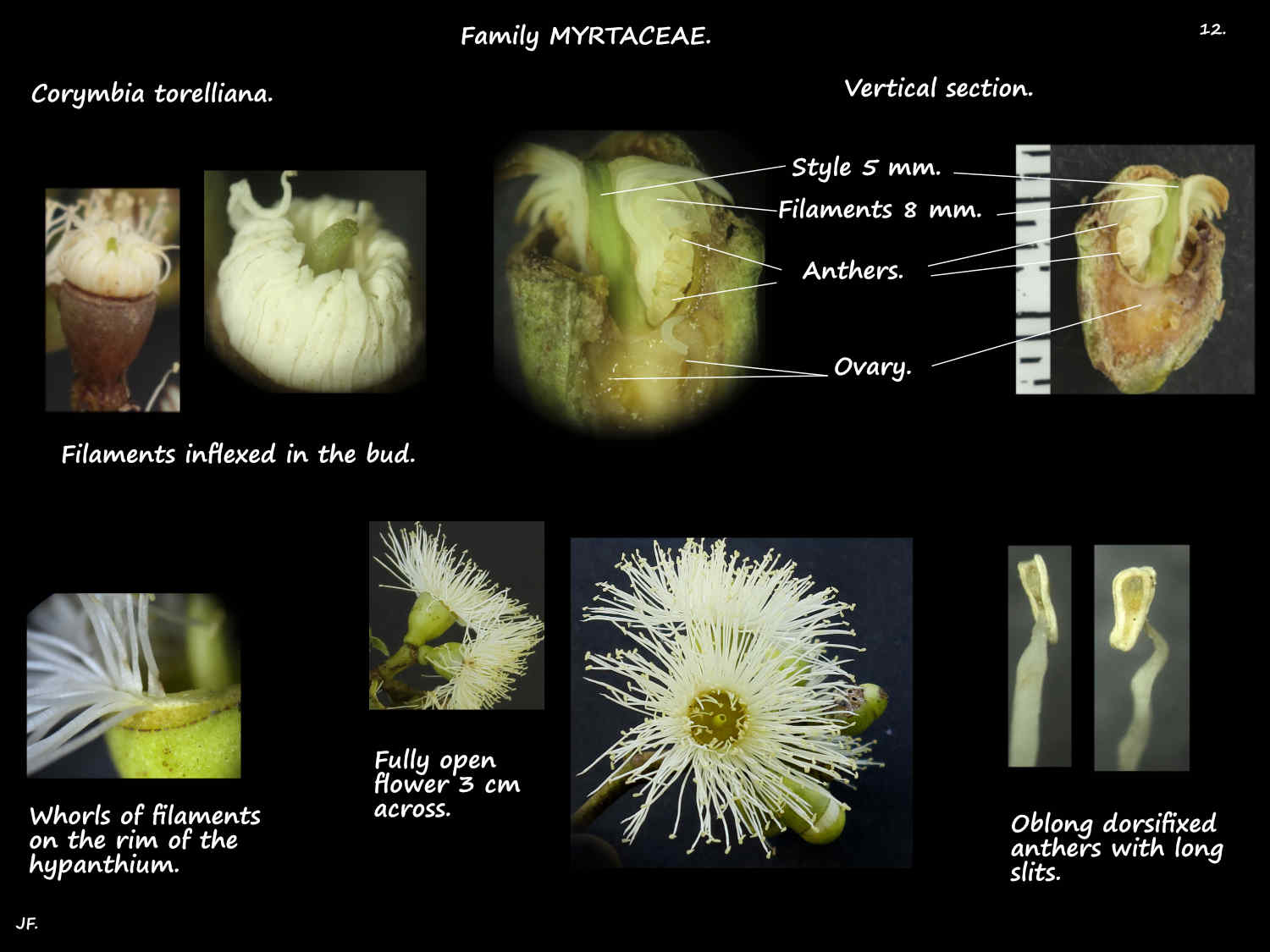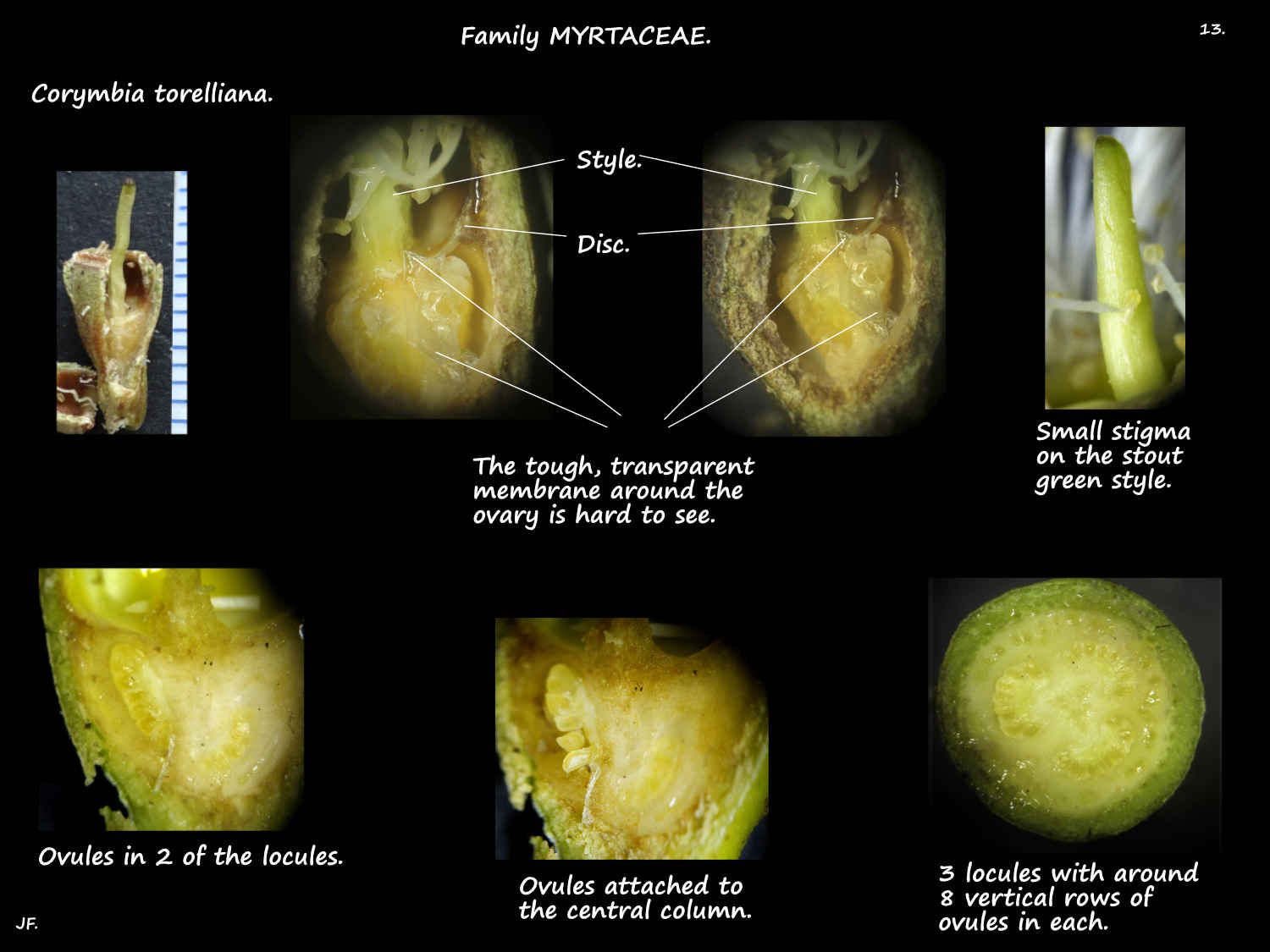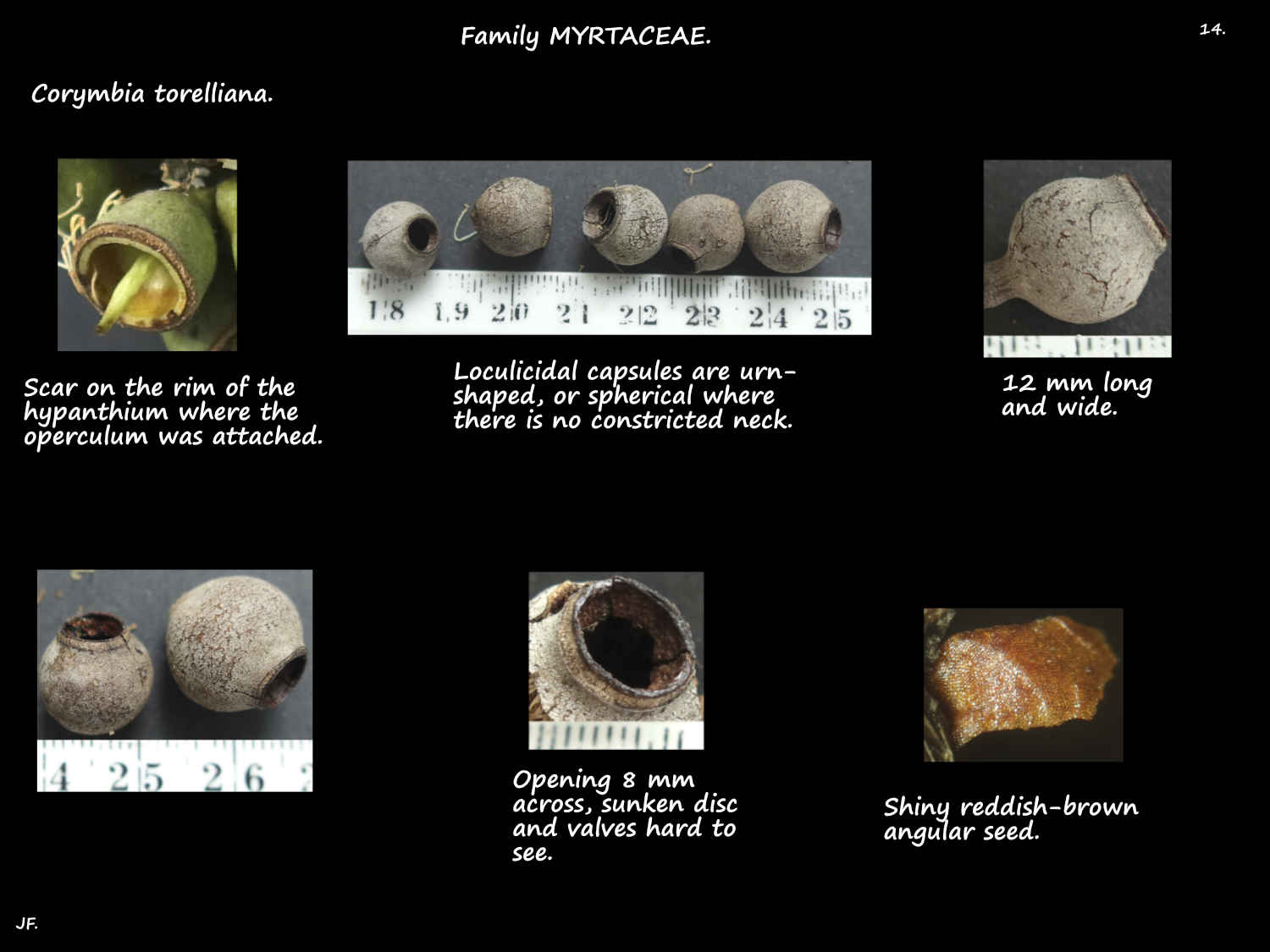Native to north Queensland it was previously known as Eucalyptus torelliana.
Years ago Cadaghi trees were commonly grown in Brisbane gardens.
No longer used there are still a lot of large old trees around.
They have spread from gardens to become naturalised in S. E. Queensland.
They are now a declared environmental weed in the area.
Old trees can be 20 or 30 m high with over half of that being the straight trunk.
At the base the trunk can be 1 m across.
There is no lignotuber but there may be buttress roots.
Young trees have smooth bark all over.
The lower trunk on old trees has persistent rough dark grey-brown bark.
This fibrous bark may develop fissures and become tessellated.
The upper trunk and branches have smooth pale to greenish-grey bark.
On old trees the smooth bark may loose its green tinge.
The small brown juvenile branches can be round or square in cross section.
They usually have dense bristly red hairs but can be smooth.
Leaves are said to develop in 4 stages.
Seedling leaves, on a short petiole may occasionally be opposite for a few pairs.
Densely hairy they are ovate to elliptic and around 12 cm long by 7 cm wide.
These are followed by the juvenile then intermediate leaves.
Occasionally, on old trees there are some narrow lance-shaped adult leaves.
All the leaves in the crown of most trees are the intermediate ones.
On a petiole up to 2.5 cm long they are ovate, elliptic or heart-shaped.
They are slightly longer and narrower than the juvenile leaves.
The base can be lobed, flat or cordate and the tip is a more tapering point.
The lower surface is paler (discolorous).
Young leaves have dense red or pale bristly hairs on the petiole and both blade surfaces.
Older leaves still have enough bristly hairs to make the surfaces feel rough.
Parallel lateral veins run from the midrib to the intramarginal vein.
The oil glands, obvious in young leaves are still visible in older leaves.
Most trees have at least some leaves with areas of black sooty mould.
The terminal (axillary) inflorescences are only seen on adult trees.
On a peduncle up to 2.5 cm long they can be up to around 20 cm long.
The primary peduncle branches 2 or 3 times giving a dense inflorescence.
The terminal branches, half to a few cms long have clusters (umbellasters) of 2 to 7 or 8 buds.
The ovoid buds are on a pedicel 1 to 3 mm long.
Buds, nearly 1 cm long have a smooth cup-shaped hypanthium.
The hypanthium is formed of fused sepal and filament bases.
Around 6 mm long and nearly as wide it has an operculum around 2 mm long.
The cup-shaped operculum has a rounded or slightly conical top.
Of fused sepal lobes it sometimes has a tiny beak.
There are numerous stamens on long white filaments.
They are attached to the rim of the hypanthium in 2 whorls.
In the bud the filaments are bent inwards 180 degrees.
This puts the anthers on the top of the disc.
As the flowers mature the stamens uncurl and spread out.
When fully open flowers are around 3 or 4 cm across.
It is the filaments that give flowers their colour.
The small dorsifixed anthers open through longitudinal slits.
The inferior ovary lies in the bottom of the hypanthium.
It has 3 locules each with vertical rows of ovules.
The stout green style, around 6 mm long has a small stigma on the tip.
Fruit are an urn-shaped loculicidal capsule commonly known as a gumnut.
Around 10 to 14 mm long and wide they lie inside the now woody hypanthium.
Some may have no constricted neck making them spherical.
The 3 small valves, and the disc lie well within the capsule.
The numerous tiny reddish-brown seeds are around 2 mm long.
Flattened, shiny and roughly ovoid they have no wing.
J.F.


